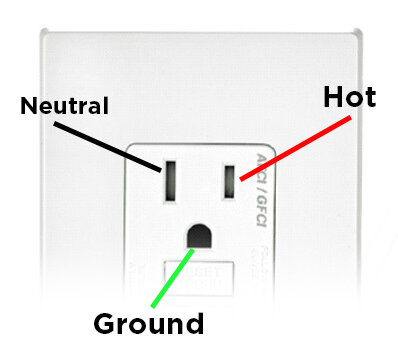a polarized electrical receptacle is used for
Hey there! We've got some fascinating content to share with you today. Let's dive right into the world of electrical wiring and switches. Whether you're a DIY enthusiast or just curious to learn more about the topic, we've got you covered!
1. The Importance of Proper Wiring
Having a solid understanding of how electrical outlets are wired is essential for both safety and functionality in your home. Check out this image below:

In this diagram, you can see the different components and connections involved in wiring a typical electrical outlet. It's important to follow proper wiring techniques to prevent electrical hazards and ensure efficient power distribution.
2. Choosing the Right Electrical Components
When it comes to receptacles and switches, there's more to consider than just their appearance. The functionality and safety aspects are equally crucial. Take a look at this image:

In this picture, you can see a variety of receptacles and switches. It's crucial to understand the different types available and select the ones that are appropriate for your needs. For example, polarized receptacles help maintain consistent voltage levels, preventing potential damage to sensitive devices.
Remember, safety is paramount when dealing with electrical components, so always ensure you use high-quality products from trusted manufacturers.
3. Understanding Electrical Wiring
If you're interested in learning more about electrical wiring, let's explore the topic further. Wiring can be intimidating at first, but with the right knowledge, you'll be able to tackle basic projects confidently.
Electrical wiring consists of several essential components, including cables, wires, connectors, and switches. The cables and wires transmit the electrical current, while switches control the flow of electricity to specific outlets or devices.
When working with electrical wiring, it's crucial to follow local building codes and safety guidelines. If you're unsure about any aspect of a wiring project, it's best to consult a licensed electrician to ensure everything is done correctly.
4. Common Wiring Mistakes to Avoid
Even experienced DIYers can make mistakes when it comes to electrical wiring. Here are a few common pitfalls to watch out for:
- Incorrect wire sizing: Using wires that are too thin for the intended load can lead to overheating and potential fire hazards. Always consult the appropriate wire sizing charts for your project.
- Loose connections: Failing to secure wire connections properly can lead to power interruptions and pose safety risks. Double-check all connections to ensure they are tight and secure.
- Overcrowded junction boxes: Stuffing too many wires into a single junction box can lead to overheating and potential electrical issues. Use larger boxes or divide the wiring into separate circuits if needed.
- Ignoring grounding: Proper grounding is crucial to prevent electrical shocks and protect sensitive equipment. Always ensure your wiring includes proper grounding techniques.
By avoiding these common mistakes, you'll enhance the safety and reliability of your electrical system.
5. Conclusion
Electrical wiring might seem complex, but with the right knowledge and precautions, it becomes manageable. Remember to follow safety guidelines, choose the right components, and avoid common mistakes.
If you're planning any major electrical projects or are unsure about a specific wiring task, it's always best to consult a professional electrician. They have the expertise to ensure everything is done correctly and safely.
So go ahead and dive into the world of electrical wiring with confidence. Stay safe, have fun, and keep expanding your knowledge!
Image sources:
Image 1: us plug wiring diagram - IOT Wiring Diagram. Retrieved from here.
Image 2: Choosing Receptacles and Switches - Fine Homebuilding. Retrieved from here.

